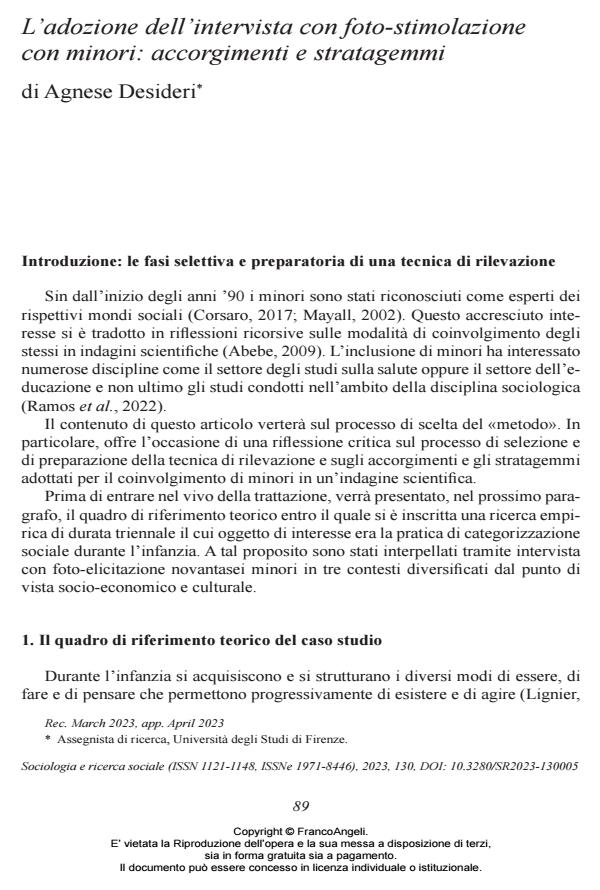The adoption of the interview with photo-stimulation with minor: tricks and tricks
Journal title SOCIOLOGIA E RICERCA SOCIALE
Author/s Agnese Desideri
Publishing Year 2023 Issue 2023/130
Language Italian Pages 19 P. 89-107 File size 225 KB
DOI 10.3280/SR2023-130005
DOI is like a bar code for intellectual property: to have more infomation
click here
Below, you can see the article first page
If you want to buy this article in PDF format, you can do it, following the instructions to buy download credits

FrancoAngeli is member of Publishers International Linking Association, Inc (PILA), a not-for-profit association which run the CrossRef service enabling links to and from online scholarly content.
A. Desideri, (L’adozione dell’intervista con foto-stimolazione con minori: accorgimenti e stratagemmi) This essay reflects on ways of carrying out scientific investigations involv- ing children. These reflections emerged during a threeyear empirical study on the processes of social categorization, where ninety-six minors were inter- viewed through a photo-stimulation interview. The focus is on the selection and preparation of the detection technique. The photo-stimulated instrument will be analyzed in a comparative key with other detection tools, in order to highlight the potential but also the critical issues. The measures taken to involve minors will also be described.
- Children's social categorisation practices and family background Agnese Desideri, in WELFARE E ERGONOMIA 2/2024 pp.43
DOI: 10.3280/WE2023-002004
Agnese Desideri, L’adozione dell’intervista con foto-stimolazione con minori: accorgimenti e stratagemmi in "SOCIOLOGIA E RICERCA SOCIALE " 130/2023, pp 89-107, DOI: 10.3280/SR2023-130005